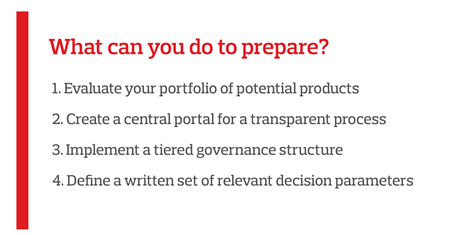Two of the biggest forces driving business innovation are unmet client needs and technology. Whilst unmet client needs tend to evolve more gradually reflecting changes in society, technology often advances in leaps. Most notably, the internet and cloud computing triggered the creation of organisations like Google or Amazon that caused seismic shifts from tangible to non-tangible company asset values and turned the leader board of the world’s most valuable companies upside down.
Whilst these shifts demonstrate the immense power of business model innovation – think “sharing economy” – we are still at the beginning of the fourth industrial revolution and the potential of further product innovation remains vast and often unrealised. However, when we look at the development of data and analytics-driven business models, for example in the insurance industry, it is striking that companies are struggling to excel bringing relevant products to the market.
But why is that the case? Why aren’t incumbent players adapting their product and services portfolio quicker with all their broad resources? Why aren’t ideas developed faster and turned into many new data & analytics driven services to grow market share?
On first sight, data and analytics-driven product developments versus an analogue approach should profit from lower costs to innovate and allow for more ideas to be tested faster and cheaper. But actually, these can be challenging to orchestrate just because there are so many opportunities and variations available, and this is a skill that needs to be nurtured from within every organisation.
Whilst a well-crafted talent sourcing strategy and an intelligent business partnership concept can overcome deficiencies in building a data and analytics-savvy business function with external help, the business and product development functions managing an innovation portfolio need to be home grown. Otherwise the risk of low business acceptance, castle-in-the-cloud style thinking and a lack of strategic alignment across business unit is too high to bear.
Large organisations, where not everything revolves around one major idea like in a start-up firm, will face challenges like: What idea should be prioritised over another? Which ideas can be clustered into a more encompassing, single opportunity? How do we balance current versus new business model needs? Short term impact versus long term investments? Geography versus segment priorities? Who should be involved how in decision making? Etc, etc.
What can you do today to prepare?
To solve for this dilemma there are four elements organisations should consider when managing their data & analytics innovation pipeline.

- Think of your pool of ideas as a portfolio of potential products that needs to be evaluated along a funnel of tests and investment decisions, becoming more comprehensive from stage to stage.
- Create a central portal to make the innovation portfolio transparent on an enterprise level, so you can compare and contrast ideas across silos as well as create acknowledgement of progress and efforts invested.
- Implement a tiered governance structure combining the business and technical aspects of product development; then grow the organisational muscle memory through recurring meetings and discussions utilising the central portfolio management tool.
- Define a written set of relevant decision parameters. They should reflect strategic as well as financial and tactical elements (Does an idea sustain a company’s goal of building a digital distribution capability? How do you rate the ease of execution? What’s the expected time to positive ROI?) and include pre-defined benchmarks to rank ideas against each other.
Implementing such measures will help organisations to realise impact from their data and analytics innovation portfolio and diminish costs to innovate continuously. In a post Covid-19 business world which will likely be more remote, less analogue and even more insights-driven, this is a challenge well worth taking up.
About the Author
Constantin Beier is Head of Business Development for Data & Analytic Services. He helps deliver data-driven solutions to help clients make better decisions, using Aon’s Data & Analytic Services platform. He manages the firm’s product development portfolio by identifying and assessing opportunities, helping to prioritise product developments and fostering product application. He was previously CEO of Aon's Centre for Innovation & Analytics Dublin, COO for Aon Inpoint and the architect of Aon’s post-Brexit operating model. Constantin holds a doctorate degree from Heidelberg University and serves on the board of entities in Germany, Norway and Singapore.